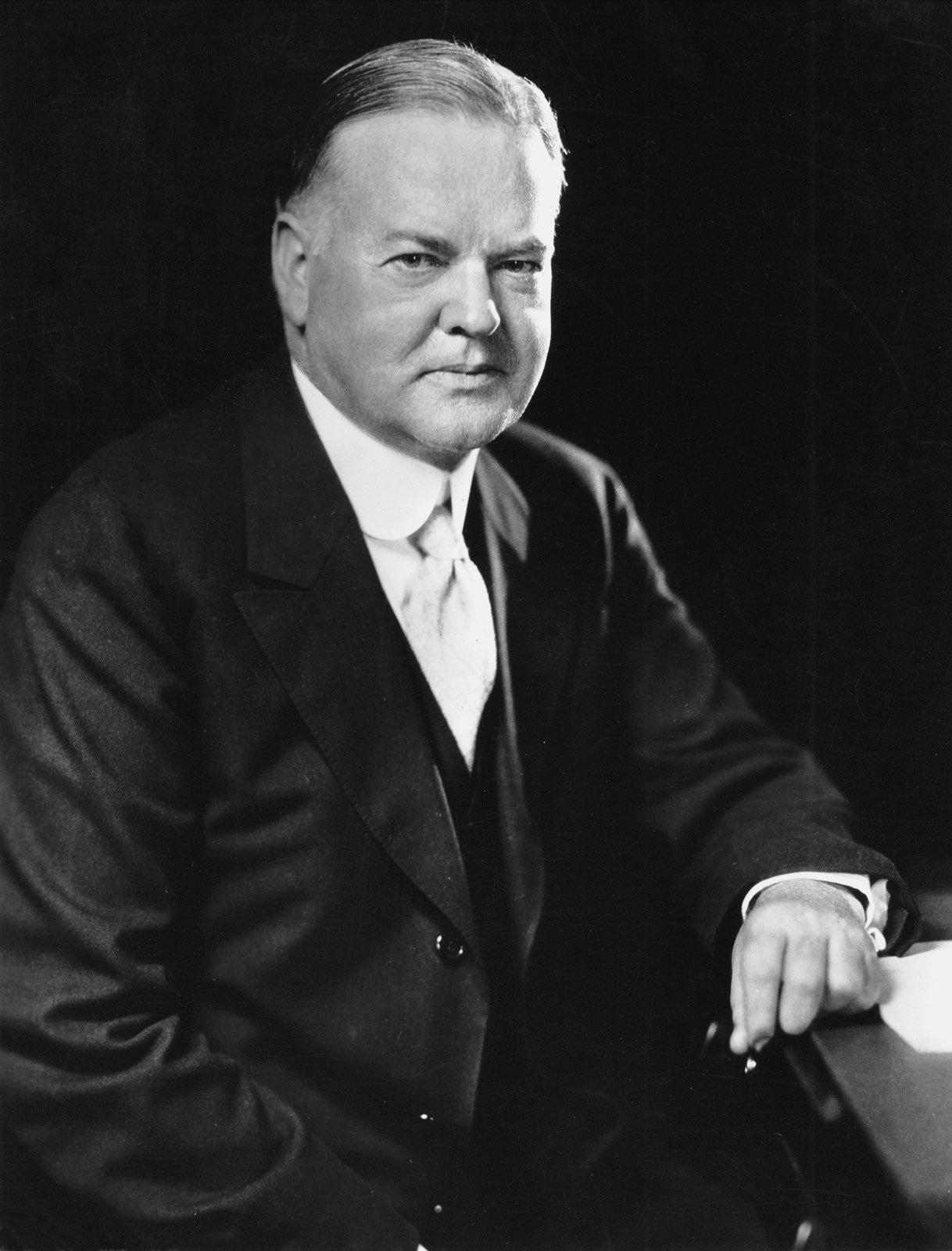Herbert Clark Hoover, the first president born west of the Mississippi River, was born on August 10, 1874, in West Branch, Iowa. His parents are Jesse Hoover and Hulda Randall Minthorn, who were Quakers. He went to school regularly, but aside from the Bible, he didn’t do much reading independently. At the age of six, Herbert Hoover’s father died in 1880 at the age of 34, and he was raised in Oregon by his maternal aunt and uncle after his mother died a few years later.
Herbert Hoover was the first-class member to attend Stanford University when it opened in 1891 after attending Quaker schools. He earned a geology degree and began a lucrative career as a mining engineer four years later. Hoover was a brilliant and hardworking man who traveled the world searching for precious mineral deposits and established businesses to extract the minerals. He became a multimillionaire as a result of his efforts. Hoover married Lou Henry, his college sweetheart, on February 10, 1899, and the couple had two sons, Herbert and Allan Henry.
Humanitarian Action
He was a lifelong humanitarian. In China, during the Boxer Rebellion as an adult, he organized relief efforts for stranded foreigners. When World War I broke out four years later, he assisted Americans left in Europe. For the next three years, Herbert Hoover led the Belgian Commission for Relief, assisting in the procurement of food for 9 million Belgians in the wake of German troops’ massive encroachment. President Woodrow Wilson appointed Hoover as the Food Administration head, which diverted American agricultural products to American troops overseas.
Following that, he became the American Relief Administration director, which helped post-World War II Europe feed its citizens. President Warren G. Harding, like President Calvin Coolidge before him, chose Hoover to be his secretary of commerce. He was the driving force behind projects like the St. Lawrence Seaway and the Hoover Dam in this capacity.
Herbert Hoover played a crucial role in coordinating the fledgling radio broadcasting and civilian aviation industries during the tremendous modernization of the 1920s and laying the groundwork for the building of a massive dam on the Colorado River between Arizona and Nevada.
Political Career
He was widely revered in the United States due to his humanitarianism, and both political parties pursued him as a presidential candidate in 1920.
Herbert Hoover became a Republican soon after and accepted President Warren Harding’s offer to serve as Secretary of Commerce. He developed a wide range of standards for manufactured goods, lobbied against waste and inefficiency in manufacturing, and promoted new industries such as radio and aviation at the Department of Commerce, where he served under both the Harding and Coolidge administrations. He became one of Washington’s most respected men, but his fame soared in 1927 due to his remarkable service to victims of the Mississippi River Flood that year.
Presidential race and administration
“Americans are closer today than ever before in every land to the dream of the elimination of poverty and terror from the lives of men and women,” Herbert Hoover said during his presidential campaign in 1928. The stock market crash of 1929, a year later, threw the nation into the worst economic downturn in its history. President Hoover broke with Republican Party figures, including Secretary of the Treasury Andrew Mellon, who thought the government should do nothing but wait until the next step of the business cycle.
Herbert Hoover acted quickly. He summoned corporate leaders to the White House to implore them not to lay off employees or reduce salaries. Herbert Hoover encouraged state and local governments to join private charities in assisting Americans who had become impoverished due to the Great Depression. He requested that Congress approve funds for public works programs to increase government jobs.
The economy of the United States did not respond to Hoover’s initiatives. As the Depression intensified, banks and other businesses failed, and poverty spread throughout the country, the American people began to blame Herbert Hoover. The homeless started referring to their encampments as “Hoovervilles.” More government action was demanded, direct relief payments to the poorest of the millions of unemployed.
In 1931, he supported the Reconstruction Finance Corporation’s establishment, which was established in 1932 and is a large-scale lending institution aimed at assisting banks and industries and thus promoting a general recovery.
Later Years
During Hoover’s presidency, the Depression intensified, and critics gradually painted him unconcerned about the American people’s plight. Hoover had become a widely unpopular–even despised–figure throughout much of the country by the 1932 presidential election. He was soundly defeated by the Democratic nominee and New York governor Franklin D. Roosevelt. He vowed to introduce a slate of social reforms and economic stimulus measures that he characterized as a New Deal for the American people.
Herbert Hoover dedicated his post-Presidential years to social causes such as the Boys Clubs of America and the Hoover Institution, a research center he established on the Stanford campus in 1919. During that time, he also published over 40 books.
Death
Late in the 1950s, Herbert Hoover returned to Iowa when he decided to allow friends and associates to build a “Presidential Library” near his birth site. Hoover demanded that the structure be small in comparison to the other systems in the neighborhood. On August 10, 1962, the former President paid his last visit to Iowa to dedicate the building to the American people.
On October 20, 1964, Herbert Hoover passed away. Herbert Hoover’s body was laid to rest on October 25 on an Iowa hill overlooking the cottage where he was born.
US Presidents | ||

